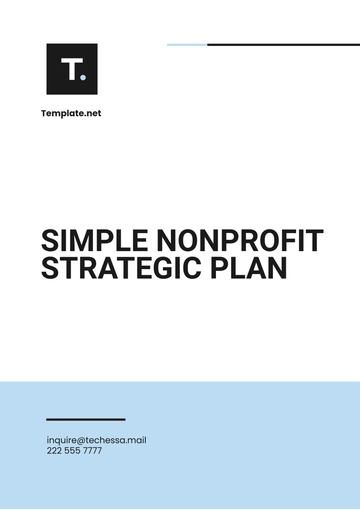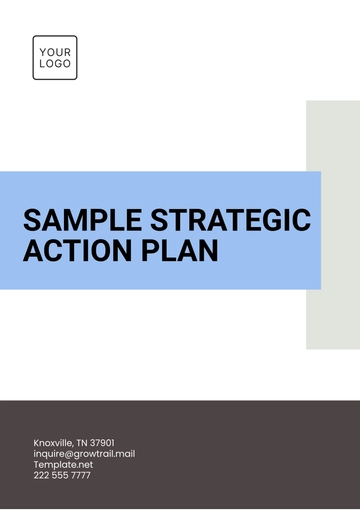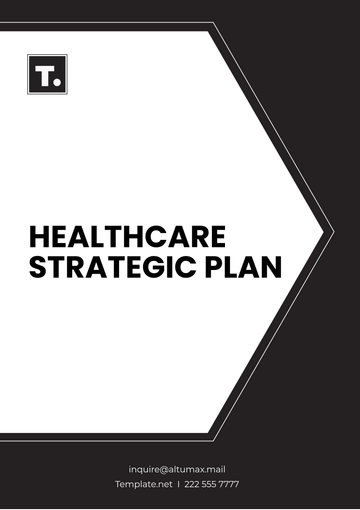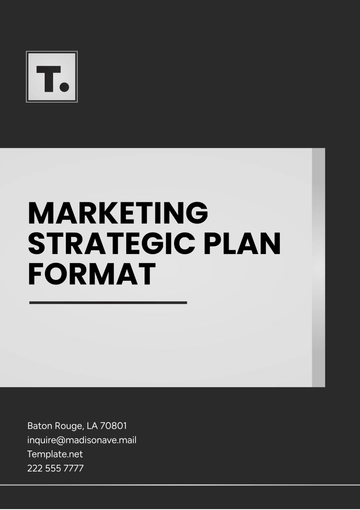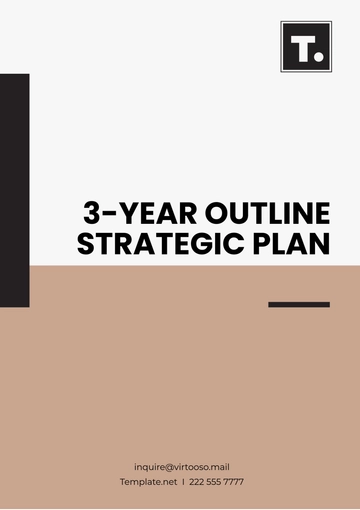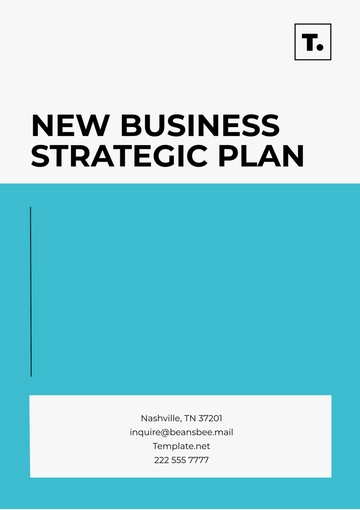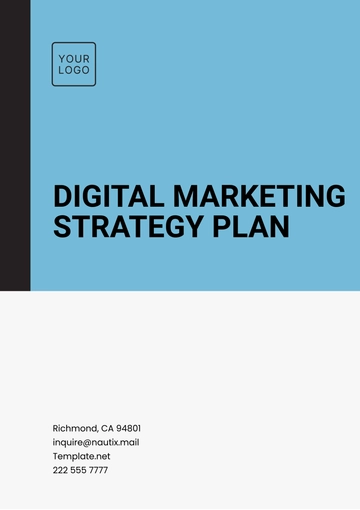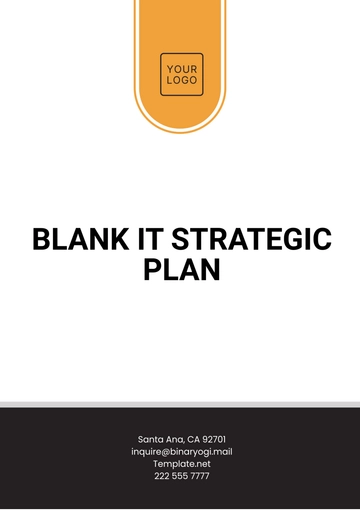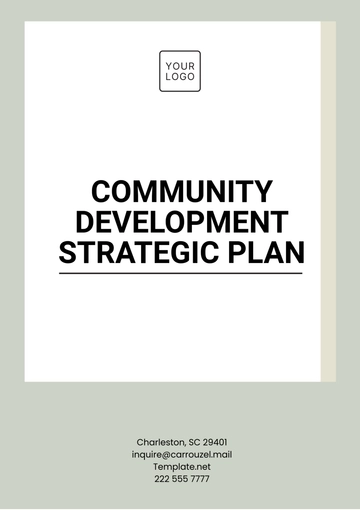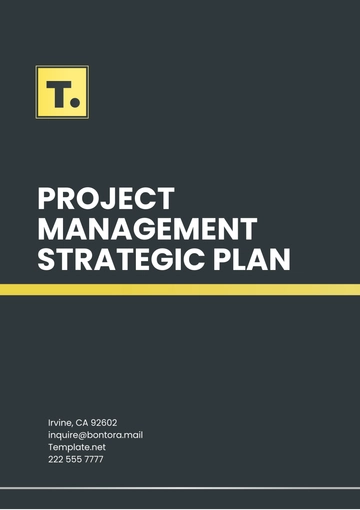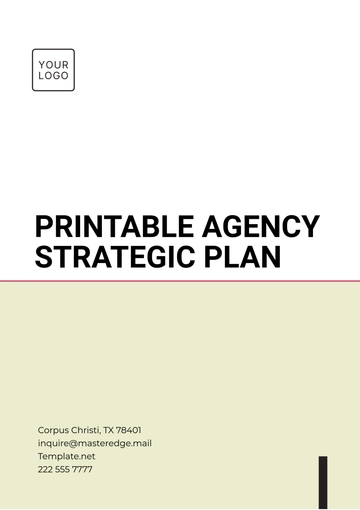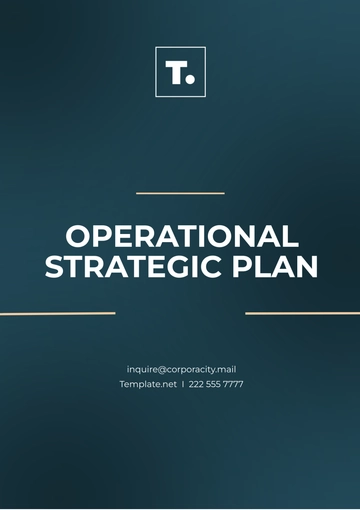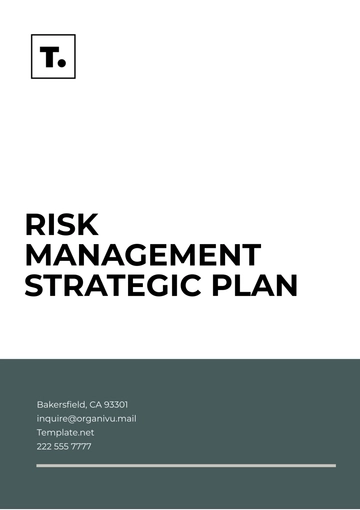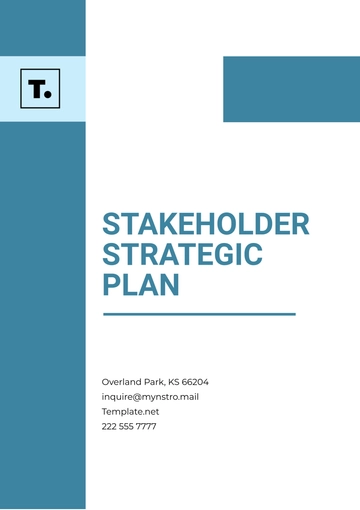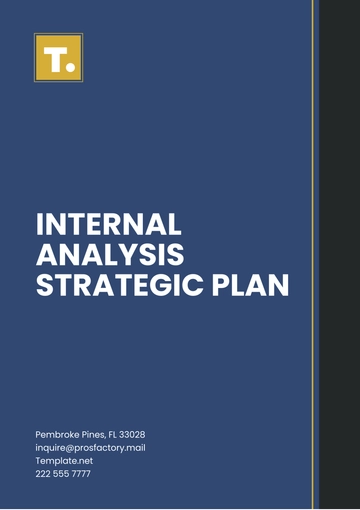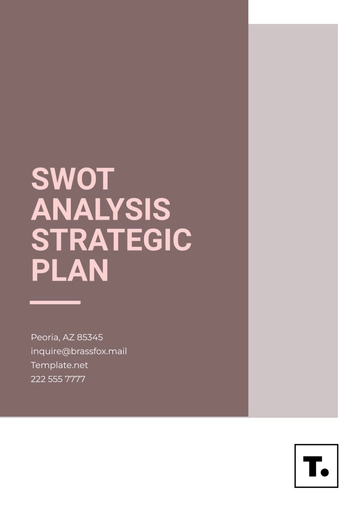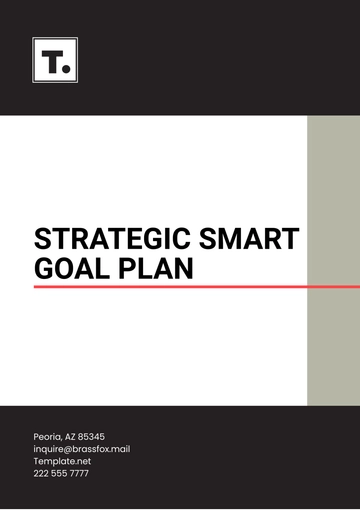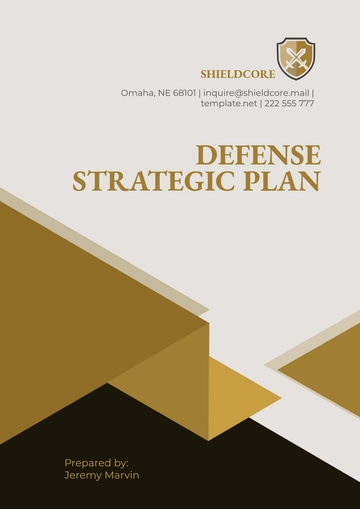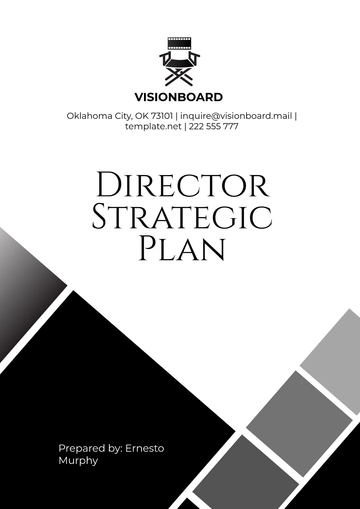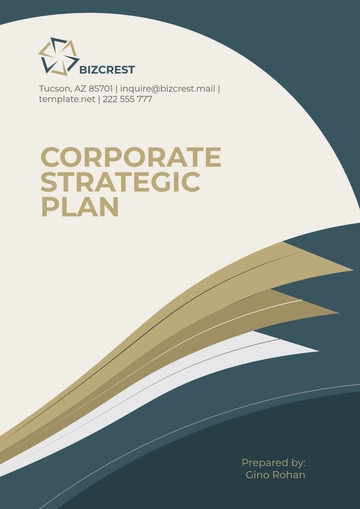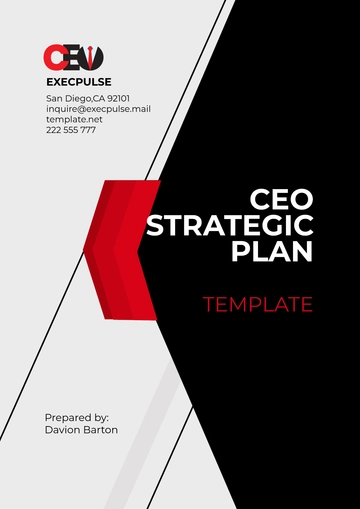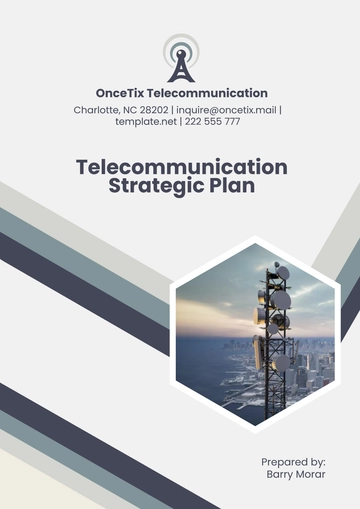Free Non Profit Strategic Plan
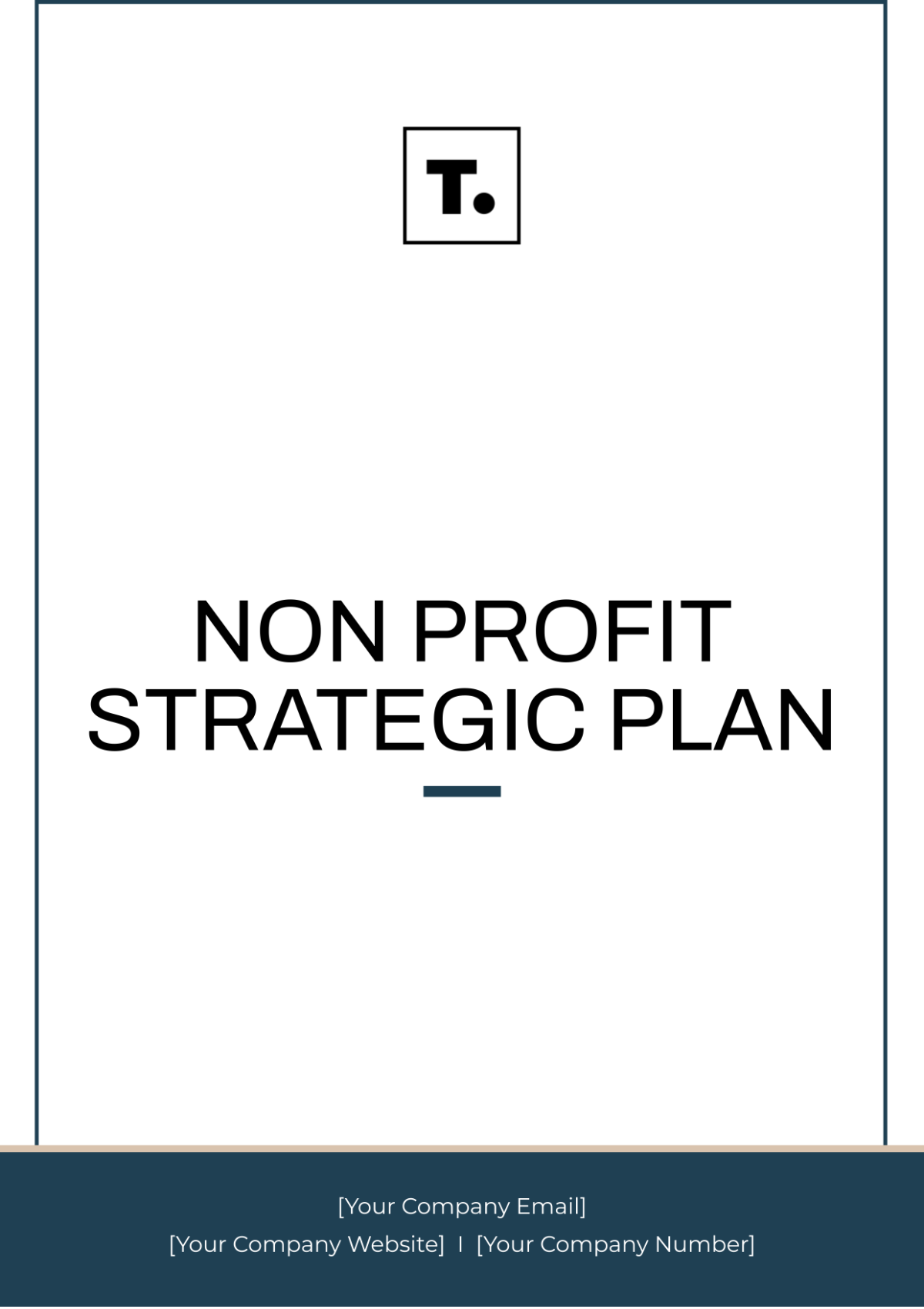
Name | [YOUR NAME] |
|---|---|
Nonprofit Organization | [YOUR COMPANY NAME] |
Date | [DATE] |
I. Executive Summary
A. Mission Statement
The [YOUR COMPANY NAME] is dedicated to empowering individuals and communities through education, healthcare, and economic development initiatives.
B. Vision Statement
Our vision is a world where every person has the opportunity to thrive and reach their full potential.
C. Objectives
Expand Programs: Increase the reach of our education and healthcare programs to underserved communities.
Increase Impact: Enhance the effectiveness of our economic development initiatives to create sustainable change.
Ensure Long-term Financial Stability: Develop diversified funding strategies to support our programs and operations.
II. Organizational Analysis
A. SWOT Analysis
Strengths | Weaknesses |
|---|---|
Strong community partnerships | Limited funding sources |
Dedicated staff and volunteers | Lack of organizational infrastructure |
Positive reputation in the community | Reliance on grant funding |
Opportunities | Threats |
|---|---|
Growing interest in social impact investing | Economic downturn affecting donor giving |
Potential for corporate partnerships | Competition for limited funding resources |
Emerging technologies for program delivery | Regulatory changes impacting operations |
B. Stakeholder Analysis
Board of Directors: The board provides strategic guidance and oversight to ensure alignment with organizational goals.
Staff and Volunteers: Our dedicated team plays a crucial role in implementing programs and engaging with the community.
Donors and Funders: We rely on the support of individual donors, foundations, and corporate sponsors to fund our initiatives.
Community Partners: Collaborations with local organizations and government agencies enhance our ability to reach and serve target populations.
III. Goals and Strategies
A. Goal 1: Program Expansion
Objective: Expand our education and healthcare programs to reach 20% more individuals in underserved communities.
Strategy 1: Conduct needs assessments to identify priority areas for program expansion.
Strategy 2: Forge partnerships with local schools and healthcare providers to facilitate program delivery.
Strategy 3: Secure grants and donations to fund the expansion of existing programs and launch new initiatives.
B. Goal 2: Impact Enhancement
Objective: Increase the effectiveness of our economic development initiatives to reduce poverty levels by 15%.
Strategy 1: Implement training and skills development programs to empower individuals with marketable skills.
Strategy 2: Provide access to microfinance and small business support services to encourage entrepreneurship.
Strategy 3: Establish monitoring and evaluation systems to track outcomes and identify areas for improvement.
C. Goal 3: Financial Sustainability
Objective: Develop sustainable funding strategies to reduce reliance on grant funding and ensure long-term stability.
Strategy 1: Cultivate relationships with major donors and corporate partners to diversify funding sources.
Strategy 2: Launch a monthly donor program and explore opportunities for legacy giving to increase recurring revenue.
Strategy 3: Invest in fundraising capacity building and staff training to enhance our ability to secure funding.
IV. Implementation Plan
A. Timeline
Year 1: Focus on needs assessments and program planning for expansion initiatives.
Year 2: Roll out expanded programs and launch fundraising campaigns to support growth efforts.
Year 3: Evaluate program impact and adjust strategies as needed to achieve desired outcomes.
B. Resource Allocation
Financial Resources: Allocate 40% of the budget to program expansion and impact enhancement initiatives.
Human Resources: Assign dedicated staff members to oversee program expansion and fundraising activities.
Technology and Infrastructure: Invest in technology upgrades to improve program delivery and data management systems.
C. Monitoring and Evaluation
Establish key performance indicators (KPIs) to measure progress towards strategic goals.
Conduct quarterly evaluations to assess program effectiveness and make data-driven decisions.
V. Risk Management
Identify potential risks such as funding shortages, regulatory changes, and external market conditions.
Develop contingency plans to mitigate risks and ensure continuity of operations.
VI. Communication Plan
Internal Communication: Hold regular staff meetings and provide updates on strategic plan implementation progress.
External Communication: Engage with donors and community partners through newsletters, social media, and events to share success stories and impact outcomes.
VII. Conclusion
This strategic plan outlines our commitment to expanding programs, increasing impact, and ensuring long-term financial stability. Through collaborative efforts and strategic investments, we aim to create lasting change and empower individuals and communities to thrive.
- 100% Customizable, free editor
- Access 1 Million+ Templates, photo’s & graphics
- Download or share as a template
- Click and replace photos, graphics, text, backgrounds
- Resize, crop, AI write & more
- Access advanced editor
Boost your nonprofit's growth with our Non Profit Strategic Plan Template from Template.net. Crafted for efficiency, this fully customizable and editable template is designed to streamline your planning process. Utilize our AI Editor Tool to tailor your strategy to perfection. Drive impactful results and elevate your organization's mission with ease.

